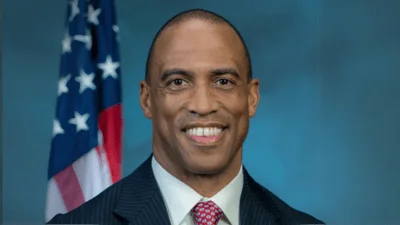Police officers in the Southern District of Ohio are diverse in every way but one: they put their lives on the line for us every day on the job. I am grateful for our officers’ diversity-and even more grateful for their one commonality.
The officers I’ve met and worked with in the Southern District of Ohio are diverse in almost every respect. They are men and women, many races, and many religions. Different officers hold different political viewpoints. They have different body types. Officers come from all kinds of different places. Some are young, and others are older. They have different kinds of education and experience. Almost any stereotype about police is bound to be wrong, or at least incomplete, in the face of this diversity.
Just as the police officers in the Southern District of Ohio are themselves diverse, so too are their agencies. There are federal, state, and local law enforcement agencies here. The geographic spaces for which different agencies are responsible vary widely in size, not to mention population, terrain, and demography. Some of the heads of these agencies are appointed; others are elected. Departments in our biggest cities may have a thousand or two thousand officers and civilian employees. The police departments in other of our municipalities might consist of a chief and one or two officers, perhaps part-time. So the police of the Southern District of Ohio work for diverse law enforcement agencies too.
Increasingly, moreover, yet a third vector of diversity for our police officers is in the kinds of duties we expect them to perform. The days when police officers could concern themselves only with patrolling the streets and ferreting out crime, if they ever existed, are long gone. Police work today requires officers to engage proactively in preventative social work. Law enforcement officers are on the front lines of engaging with populations suffering from mental health conditions. And officers must face and respond to the daily health and safety problems posed by addiction, including especially the dangers that addicted people pose to themselves.
But there is one thing that all police have in common: they put their own lives on the line to serve and protect our communities. That is the one thing that unites all police officers, regardless of their diversity from one another in so many respects. It is inherent in being a police officer.
Just last week, Kirkersville Police Chief Steven DiSario made the ultimate sacrifice in the performance of his duty. Responding to a call of an armed man outside a nursing home on Main Street, Chief DiSario engaged the gunman, who shot and killed him. The gunman then killed two other people before turning the weapon on himself.
Also last week, to our immediate north, East Liverpool Police Officer Chris Green accidentally touched fentanyl and overdosed. Responding to a traffic stop, he searched the car of two men arrested for drug trafficking, and in the course of the search, some white powder got on his shirt. When he later brushed it off, he passed out; four doses of naloxone were needed to revive him. The white powder turned out to be fentanyl, the synthetic opioid that is one 50-100 times stronger than heroin and that is ravaging our state.
Cincinnati Police Officer Kenneth Grubbs and Columbus Police Officer Patrick Shrodes were shot in the line of duty earlier this year. Fortunately, they are recovering from their injuries.
These four officers were and are as different from each as could be in so many respects. But they have one crucial thing in common: each put his life on the line-and, in the case Kirkersville Police Chief DiSario, tragically gave it-in the performance of his duty.
I thank all police officers for their dedication and honorable service.
Source: U.S. Department of Justice, Office of the United States Attorneys







